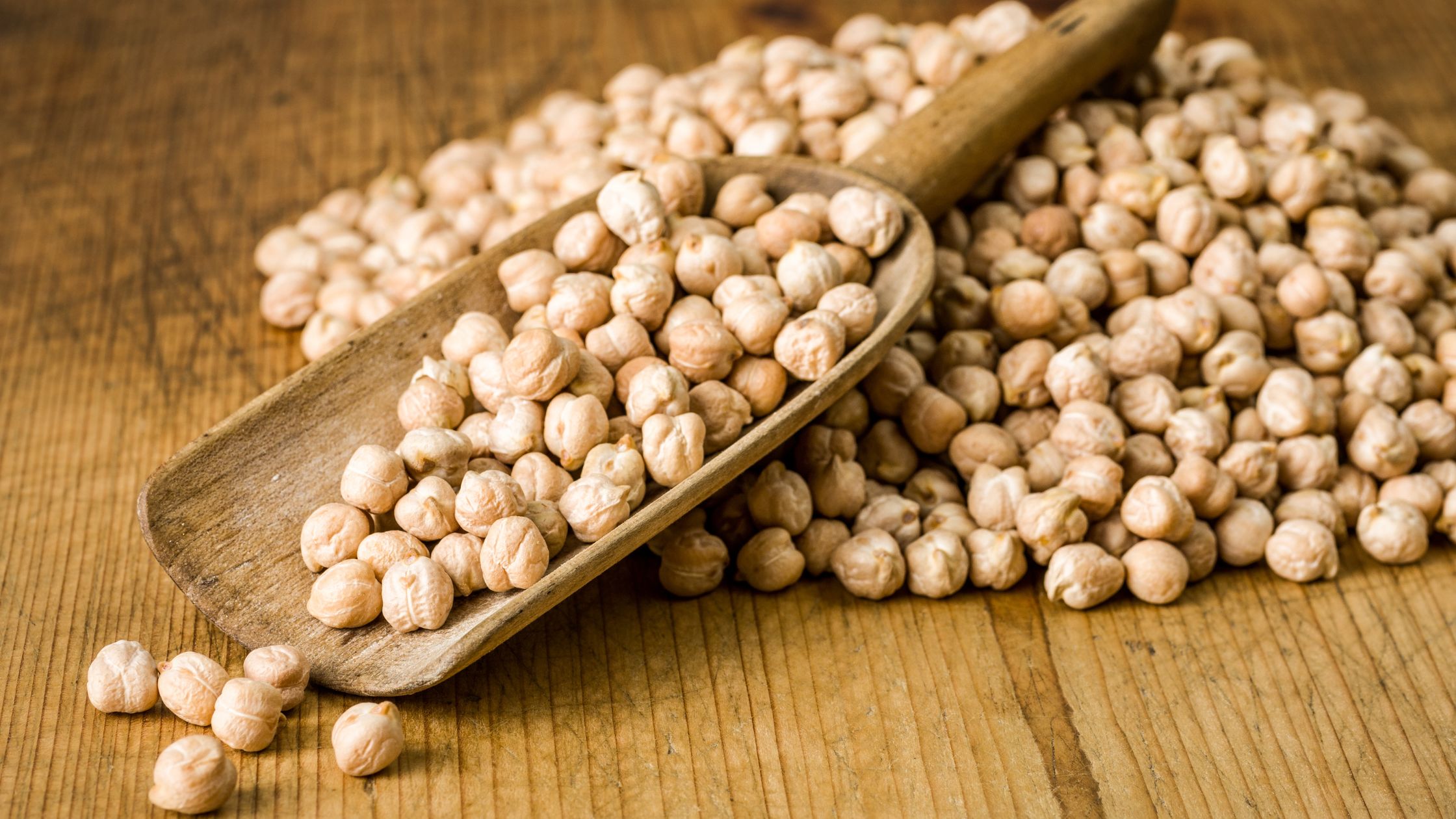When it comes to sources of protein from plants, chickpeas take the cake for being one of the most nutritionally beneficial and versatile. Known around the world as garbanzo beans, these tiny beige legumes are a dietary staple for vegetarians and vegans alike. Chickpeas lend flavor and texture to hummus, curries, salads, soups and so many more dishes also pack a powerful nutritional punch. Of all the nutrients, protein is the star of the show. So if you’ve ever wondered about chickpea protein per 100g, the health benefits of chickpeas, and how you can incorporate them into your daily diet then here is your ultimate guide.
Protein Content of Chickpea Protein per 100g
Using nutrition information, chickpea protein per 100g comes out to about 19 grams dry versus about 8–9 grams cooked. This makes chickpeas one of the best sources of plant-based protein for people trying to maintain muscle, improve satiety, or be vegetarian or vegan.
- Dried chickpeas (uncooked): 19g protein per 100g
- Cooked/boiled chickpeas: 8-9g protein per 100g
- Roasted chickpeas: 14-15g protein per 100g
From one preparation to another, chickpeas can vary in protein content. Cooking, either by boiling or roasting, changes the water content, thus changing the nutritional density. Regardless of preparation, chickpeas are still very nutrient dense.
Why Protein in Chickpeas is Important?
Protein is an important macronutrient that we require in our diet for skeletal muscle growth, tissue regeneration, enzyme synthesis, and hormone secretion. Unlike other plant-based proteins, chickpeas have a balanced mix of essential amino acids – although slightly lower in methionine. If we combine chickpeas with a whole grain (such as quinoa, rice, or whole wheat products), we will get a complete protein profile almost equal to what we get from animal proteins. chickpea protein per 100g
With respect to vegetarians or vegans, being aware of discernible protein amounts in chickpeas per 100g of chickpeas is useful for meal planning and nutrient intakes of protein for the day. Overall, the health benefits of dietary fiber, minerals, and nutrition are very beneficial and should stay part of anyone’s diet. Even for non-vegetarians, it can be a nutrient-dense food.
Chickpeas are More than a Source of Protein
While protein stole the show, chickpeas are so much more. A 100g serving of cooked chickpeas provides roughly:
- Calories: 164 kcal
- Protein: 8–9 g
- Carbohydrates: 27 g
- Dietary Fiber: 7–8 g
- Fat: 2.5 g mostly as healthy unsaturated fat
- Folate: 140 mcg (important for cell function and pregnancy planning)
- Iron: 2.9 mg
- Magnesium: 48 mg
- Potassium: 291 mg
This nutrient-dense profile provides an outstanding generally excellent option for promoting heart health, aiding digestion, and supporting blood glucose control.
Nutritional Advantages of Chickpeas Protein
-
Promotes Muscle Health
Chickpeas are a superb source of protein; containing nearly 9g of protein per 100g cooked, chickpeas are useful for maintaining muscle strength and recovery after physical activity.
-
Weight Management
Protein and fibre in chickpeas increase fullness, helping you feel satiated longer and reducing craving episodes.
-
Heart Health
Chickpeas are low in saturated fat and pack a lot of soluble fibre, which regulates cholesterol.
-
Blood-Sugar Stability
There are good facets to chickpeas’ low glycaemic index, along with their protein and fibre content, making them ideal for people with diabetes.
-
Bone Health
A combination of protein, calcium, and magnesium will promote strong, healthy bones.
Yummy Ways to Cook with Chickpeas

It is good to know the nutritional value of chickpeas protein per 100g, but the best thing about chickpeas is their flexibility in cooking. Here are some yummy ways to incorporate chickpeas into your meals:
- Hummus – A dip made from chickpeas, tahini, lemon and garlic.
- Chana Masala – A delicious Indian dish that is full of flavor and protein.
- Roasted Chickpeas – A crunchy alternative to chips for snacking.
- Salads & Bowls – Add cooked chickpeas to a salad, grain bowl, or wrap.
- Soups & Stews – Chickpeas will add another layer for nutrition and texture.
- Baked Goods – You can use chickpea flour (besan) instead of wheat flour in gluten-free baking or in Indian snacks.
Chickpeas for vegan & vegetarian diets

If you are avoiding animal food products, chickpeas are an inexpensive, accessible, and sustainable source of protein. In contrast to many processed plant-based protein powders, chickpeas are whole food, high in fiber, and don’t contain additives. If you combine your chickpeas with other plant protein, then you’ll have all of the essential amino acids. Some basic examples are:
- Chickpeas + Brown rice = complete protein
- Chickpeas + Whole wheat bread = balanced meal
- Chickpeas + Quinoa = protein-rich vegan bowl
How much chickpeas should I eat every day?
The amount of protein an adult needs is approximately 0.8-1.2 g of protein per kg of body weight each day. If you weigh 60 kg, then you need 48-72 g of protein per day.
Chickpeas are approximately 8-9 g protein per 100g when cooked. If you consume one cup of boiled chickpeas (approximately 150g), you can add 12-14 g of protein to your daily total. Using chickpeas 3-4 times a week along with other protein sources is a healthy and viable option.
Read More :- Best Yoga Poses for PCOD
Read More :- Healthy Besan Chilla for Weight Loss
Knowing chickpea protein per 100g is essential for anyone trying to bring plant-based foods into their diet. Chickpeas are a great way to boost vegetarian, vegan, and even omnivore diets. In addition to protein, chickpeas are rich in fiber, vitamins, and minerals which also contribute to heart health, digestion, and weight management. Chickpeas give you options whether you make them in a curry, salad or fancy crunchy snack. Chickpeas are proof that healthy eating can be fun too. Cheap, versatile, and super nutritious, chickpeas can definitely be classified as a superfood legume.
